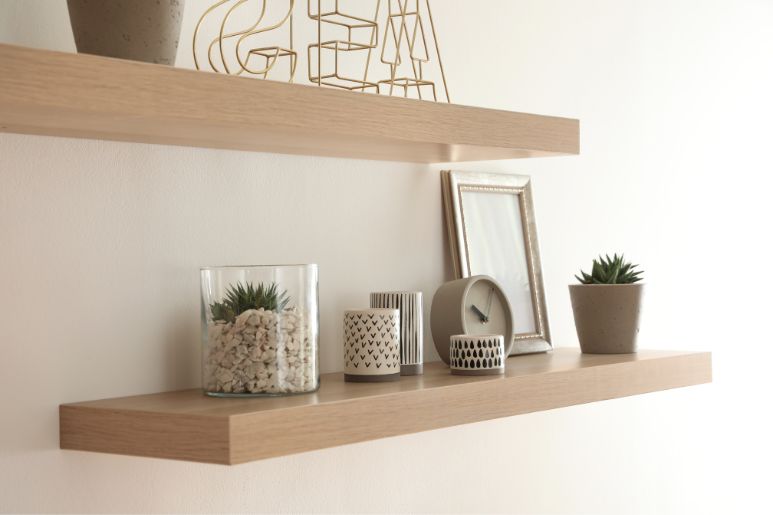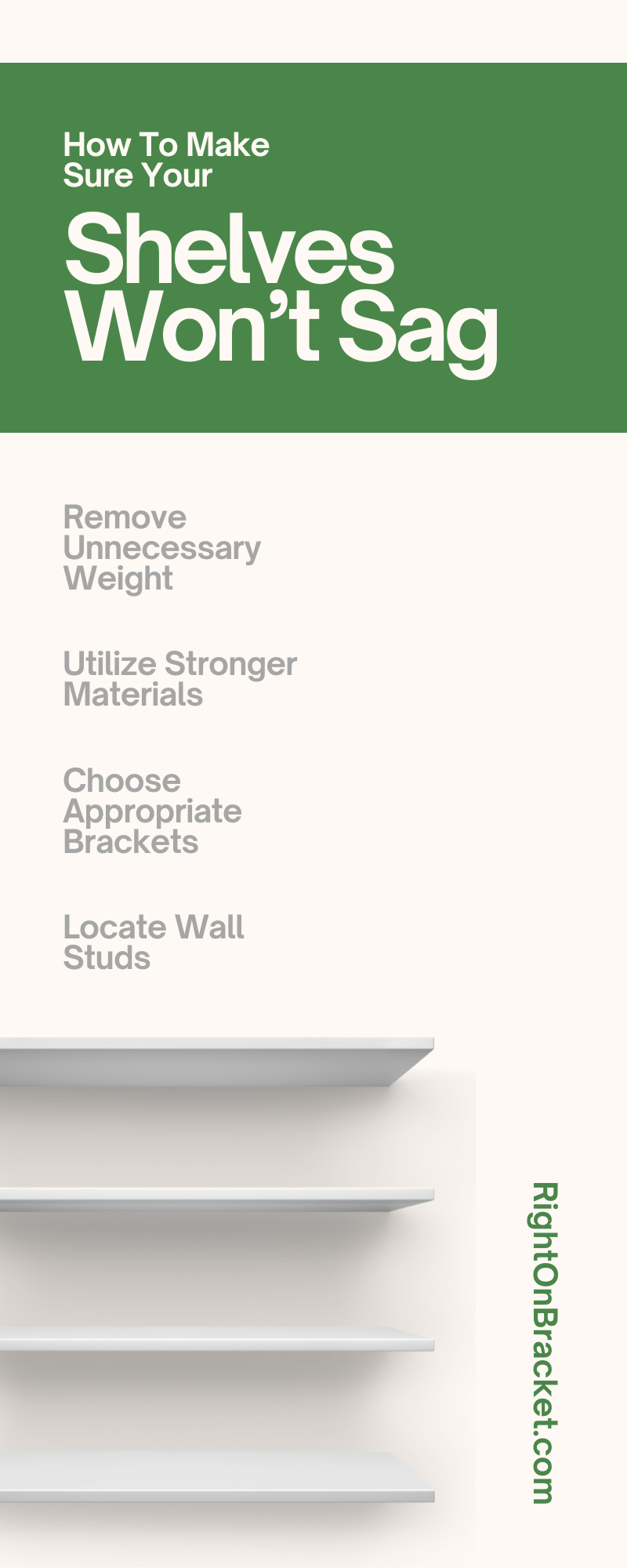
How To Make Sure Your Shelves Won’t Sag Over Time
Shelving is a great way to store and display your personal items. There are all kinds of different shelves, including built-in, fixed, floating, hanging, free-standing, and ladder shelves. Each of these types of shelving has its own advantages and disadvantages. One of the main issues that people experience with all types of shelving is sagging shelves. While this problem can be frustrating to deal with, there are some strategies and methods you can use to correct this. Here we’ll explain how to make sure your shelves don’t sag over time.
What Is Shelf Sagging
Shelf sagging is when your shelves start to sag and dip lower in the middle region. This issue is frustrating to deal with and can cause damage to your shelves, walls, and belongings. The problem can become worse over time, to the point where your shelving eventually gives out altogether. It’s important to utilize preventative strategies so you can avoid sagging shelves and keep your belongings safe and secure. There are several different factors that can influence and cause shelf sagging, so it’s helpful to be aware of these so you can counter them effectively. If you notice that your shelves are dipping down in the middle, then you are most likely experiencing shelf sagging, and you’ll want to find ways to fix the issue.
What Causes Shelves To Sag
Sagging shelves are unattractive to look at and can cause damage to your walls and belongings. Therefore, it’s essential to understand what causes this problem so you can find efficient and effective solutions. There are many elements and factors that can cause this shelving issue to occur in your home. For example, weight, material type and thickness, and shelf size all play a role in influencing whether your shelves will begin to sag over time. Read on to find out more about how these factors cause sagging and what you can do to prevent these issues.
How Shelf Weight Plays a Part
The first factor that can cause your shelves to sag is how much weight you are putting on your shelving. If you are overloading a shelf with heavy belongings, like stacks of books, magazines, trophies, plants, and other large items, you are likely surpassing the weight limit of the shelf. While manufacturers produce shelves to hold items, there is a limit to how much they can withstand. You don’t want to overdo it, or you can cause this problem without meaning to. You should make sure you aren’t putting too many things on one shelf at a time. If you need more space to hold your belongings, you should invest in more shelving instead of trying to cram everything onto one single shelf.
How Shelf Material Plays a Part
Your shelving material also has an impact when it comes to sagging shelves. There are many different materials you can choose from for shelving in your home or business. However, not all of these materials are equally durable. For example, chipboard is going to be a much weaker material than solid timber. It’s beneficial to invest in a stronger material so you can avoid sagging over time. Cheaper, less durable materials may be inexpensive, but they don’t last as long and are more prone to sagging.
How Shelf Type Plays a Part
The type of shelving you are using also plays a part in this issue. As we mentioned earlier, there are various types of shelving, and the type you choose will influence how likely your shelves are to sag. For example, loose adjustable shelving is more prone to sagging than fixed shelving. Adjustable shelving lacks the support and durability of fixed shelves. All shelving options are typically appropriate for storing and displaying belongings, but fixed shelving is a better choice in the long run if you want a long-lasting option.
How Shelf Size Plays a Part
Another element that affects whether your shelves will sag is the shelf size. Typically, the smaller the shelf, the less likely it is to sag because you can’t fit as many items on it. Long shelves are more prone to sagging because they require additional support to avoid this issue. If you wish to use longer shelves within your home, you should make sure to include the necessary support structures and equipment to keep them in good condition.
How To Avoid Sagging Shelves
Now that you know what causes and influences sagging shelves, it’s necessary to understand how to prevent and avoid this problem with your shelving. There are several beneficial strategies and techniques you can use to keep your shelves from sagging over time to ensure they stay in good condition.
Remove Unnecessary Weight
The first preventative measure you should take to avoid sagging shelves is to remove unnecessary weight. As mentioned earlier, the more items you put on your shelf, the more likely it is to sag and dip. Therefore, you should limit the number of belongings you place on a shelf. If you need more space for your things, you should add more shelves rather than adding more items to a single shelf.
Utilize Stronger Materials
Utilizing stronger materials is also a great way to prevent sagging shelves. Materials like chipboard are not as durable or long-lasting, so you should invest in stronger shelving materials. For example, solid wood like oak, birch, and pine will be more trustworthy options that can bear more weight.
Choose Appropriate Brackets
Another tip that can help you to avoid shelf sagging is choosing the appropriate shelving brackets. You want to provide enough support for your shelving, and brackets help you to do that. You will especially want brackets if you have a large or heavy shelf. It’s also beneficial to know how to install shelving brackets properly to avoid issues.
Locate Wall Studs
Locating wall studs can also prevent sagging shelving. Wall studs are the support systems that help to hold up the foundation of a home or building; when you mount shelving directly into the studs, you are providing more durability, strength, and support for your shelves. This effectively helps you to avoid the issue of sagging and drooping shelves.
Keep these helpful tips for avoiding sagging shelves in mind as you hang and mount new shelving. Right On Bracket has a selection of heavy-duty hidden shelf brackets that can help you prevent sagging and provide the needed support for your shelving.



